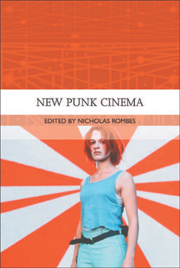4 - Sincerity and Irony
from PART I - BACKGROUNDS AND CONTEXTS
Published online by Cambridge University Press: 05 August 2013
Summary
But you see, I think the Sex Pistols and the other groups would be quite acceptable if they seemed more ironic to people. But I think they're not perceived as ironic and once they are perhaps that will be their form of domestication. Then it will be perfectly all right.
(Susan Sontag, quoted in Bockris 1998: 80)New punk cinema developed during a time when irony became a mainstay in popular culture in the post-1970s era. As such, the moments of intense emotion and melodrama in key films, Magnolia, The Idiots, Breaking the Waves, Fight Club, and Blair Witch Project can be read through conflicting registers that blur the boundaries of sincerity, irony and camp. In his 1993 essay ‘E Unibus Pluram: Television and U. S. Fiction’, David Foster Wallace offers one of the more challenging and insightful readings of the commodification of irony in post-war US culture, especially as it is expressed in literary fiction (notably metafiction) and television. For Wallace, the first wave of post-war irony – being shown the difference between the way things appear to be and the way things are – worked to expose the ‘absurd contradictions’ (Wallace 1993: 35) and hypocrisies of American culture. Television – with its ubiquity, repetition of images and ability to ‘repeat’ shows over and over again – is for Wallace the ultimate ironic medium, because it has helped to transform us into knowledgeable viewers, that is, viewers who can see through the very narratives that constitute television.
- Type
- Chapter
- Information
- New Punk Cinema , pp. 72 - 86Publisher: Edinburgh University PressPrint publication year: 2005

